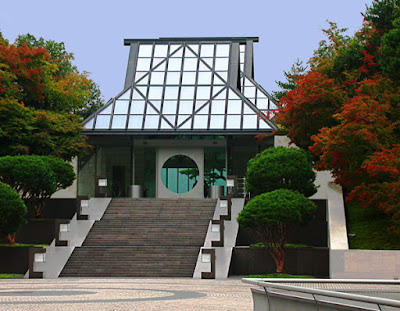
I.M. PEI: MUSEO MIHO Y LOS DURAZNOS EN FLOR
VERSIÓN EN ESPAÑOL
Once upon a time there was a fisherman in Buryo, East China, who was fishing by a stream in the mountains and accidentally found a wonderful orchard full of peach trees in bloom. Impressed by the beauty of this springtime scene, he continued paddling to the end of the grove, where he noticed a ray of light coming from a small cave at the foot of a mountain. He jumped out of his boat and entered the cave that, through a narrow road, led him into a splendid town with a beautiful countryside and hospitable people who welcomed him for several days.
This is the beginning of the popular "The Tale of Peach Blossom Spring " a very famous folk story from the Jin Dynasty in China. Taking this tale into account the renowned Chinese-American architect I.M. Pei designed the museum Miho, in Shiga Prefecture, Japan, an hour from Kyoto. Pei, a Pritzker Prize laureate in 1983 and internationally famous for his pyramidal entrance to the Grand Louvre and the singular Bank of China in Hong Kong, has projected the Miho Museum (1997) with humility but impressive mastery, and produced a jewel of contemporary architecture embedded in the landscape.
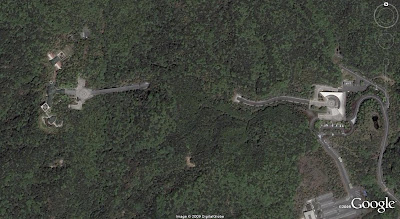
Similarly to the story, the visitor arrives to a square surrounded by peach trees preceded by a triangular building: the Reception Hall, which also contains a restaurant and library. From there, we followed a winding path of smooth pavement, which crosses the mountain, becoming a tunnel bridge and then a bridge, suddenly opening the view to the museum, and arriving to a circular plaza in front of it. The bridge itself is a piece of art, forming a stainless steel structure with a span of 220 m., whose tensors seem to radiate from the mountain like rays of light.
The museum is located on top of a mountain forest in a naturally protected area of the prefecture of Shiga. Instead of becoming a dominant structure overlooking the valleys down –like in the case of Richard Meier’s Getty Center, for instance- Pei’s more humble proposal is embedded into the ground, or more specifically speaking, removing the earth, building the museum and covering it again. In this way, he pays homage to nature, which in Japanese culture has had a symbolic, sometimes religious character.
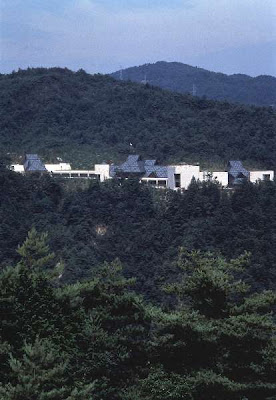
The building, almost embedded in the forest, presents a noticeable difference to the traditional European attitude with respect to the nature-architecture relationship
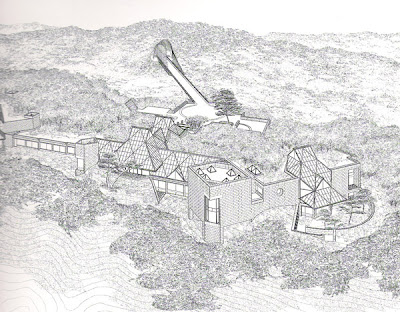
Another of the principles followed by Pei is the respect for Chinese-Japanese tradition, despite the use of modern architecture. The entrance to the museum, for instance, -a group of staircases- gives the visitor almost a processional experience, as if it one would be entering a Buddhist temple.
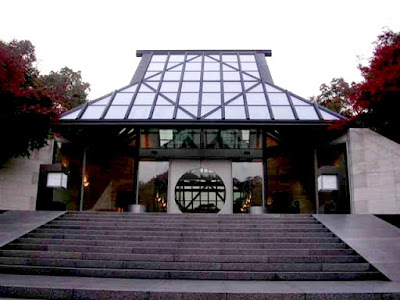
Then, one is greeted by a sliding glass and metal door, which shape forms a perfect circle when closed: the gate of China Moon.
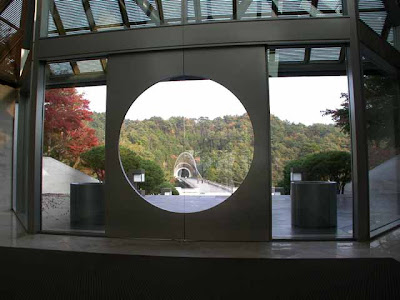
Upon entering, the geometric structure clearly evokes the wooden roof of a traditional minka, or Japanese farmhouse.
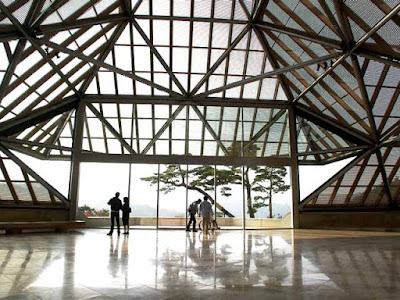

In the main hall, the architect uses an old Asian design principle that the Japanese call Shakkei or "borrowed landscape", incorporating views of a pine tree and the distant mountains into the building that provides the scenic framework to reach peace and spirituality.
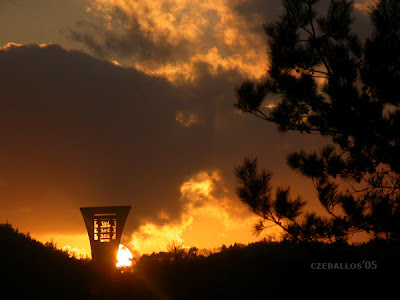
The inner circulation leads to a Zen gardens. The light and the arrangement of rooms, subtly suggest a sensual intimacy that evokes the delicate grace of the Japanese house.
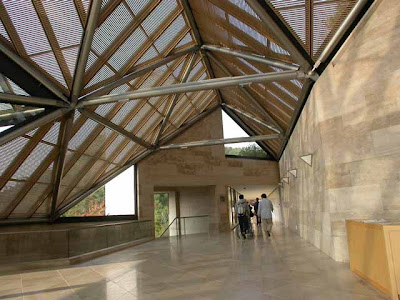
The finishing is exquisite. The stone lanterns on the entrance stairs contain Spanish alabaster. The soft beige French limestone evokes warmth and harmony, in contrast with the metallic structure of tetrahedral carbon steel tubes. Furthermore, the incidence is controlled by solar aluminum blinds painted in sepia, which imitate wood.
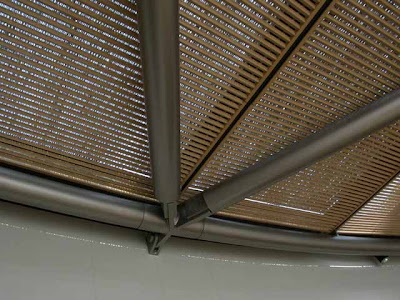
Even the concrete in used additives in order to look harmonize with the sepia tones of the environment. To further emphasize the feeling of warmth and using the double-height space, Pei included a tree in the interior, and a set of balconies to the west.
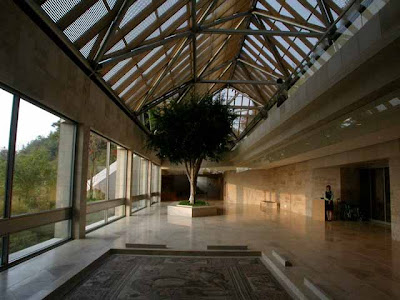
Just as the museum itself is remarkable for its architectural quality, the collection that it houses is also notable. Owned by the multu-millionaire Koyama family, founders of the religious sect Sinji Shumeikai (a religion who preaches God through the contemplation of beauty and fine arts), the museum contains about 250 pieces of fine quality including some unique pieces of Persian, Egyptian, Roman, Indian and Chinese art.
 A rare and ancient representation of Buddha with Hellenic characters, from the 2nd century AD, found in Pakistan.
A rare and ancient representation of Buddha with Hellenic characters, from the 2nd century AD, found in Pakistan.
To the world of art and architecture, the Miho Museum provides a breathtaking instance of circumspection, a building erected with character, but with no intention of imposing any style. It fits to the site physically and visually, and its elements follow the contour of the mountain. It nests on the ground, consistent with the ancient Japanese tradition that nature cannot be separated from human beings. Both are parts of an integral whole.
Click here to see a video of the Miho Museum
Once upon a time there was a fisherman in Buryo, East China, who was fishing by a stream in the mountains and accidentally found a wonderful orchard full of peach trees in bloom. Impressed by the beauty of this springtime scene, he continued paddling to the end of the grove, where he noticed a ray of light coming from a small cave at the foot of a mountain. He jumped out of his boat and entered the cave that, through a narrow road, led him into a splendid town with a beautiful countryside and hospitable people who welcomed him for several days.
This is the beginning of the popular "The Tale of Peach Blossom Spring " a very famous folk story from the Jin Dynasty in China. Taking this tale into account the renowned Chinese-American architect I.M. Pei designed the museum Miho, in Shiga Prefecture, Japan, an hour from Kyoto. Pei, a Pritzker Prize laureate in 1983 and internationally famous for his pyramidal entrance to the Grand Louvre and the singular Bank of China in Hong Kong, has projected the Miho Museum (1997) with humility but impressive mastery, and produced a jewel of contemporary architecture embedded in the landscape.

Similarly to the story, the visitor arrives to a square surrounded by peach trees preceded by a triangular building: the Reception Hall, which also contains a restaurant and library. From there, we followed a winding path of smooth pavement, which crosses the mountain, becoming a tunnel bridge and then a bridge, suddenly opening the view to the museum, and arriving to a circular plaza in front of it. The bridge itself is a piece of art, forming a stainless steel structure with a span of 220 m., whose tensors seem to radiate from the mountain like rays of light.
The museum is located on top of a mountain forest in a naturally protected area of the prefecture of Shiga. Instead of becoming a dominant structure overlooking the valleys down –like in the case of Richard Meier’s Getty Center, for instance- Pei’s more humble proposal is embedded into the ground, or more specifically speaking, removing the earth, building the museum and covering it again. In this way, he pays homage to nature, which in Japanese culture has had a symbolic, sometimes religious character.

The building, almost embedded in the forest, presents a noticeable difference to the traditional European attitude with respect to the nature-architecture relationship

Another of the principles followed by Pei is the respect for Chinese-Japanese tradition, despite the use of modern architecture. The entrance to the museum, for instance, -a group of staircases- gives the visitor almost a processional experience, as if it one would be entering a Buddhist temple.

Then, one is greeted by a sliding glass and metal door, which shape forms a perfect circle when closed: the gate of China Moon.

Upon entering, the geometric structure clearly evokes the wooden roof of a traditional minka, or Japanese farmhouse.


In the main hall, the architect uses an old Asian design principle that the Japanese call Shakkei or "borrowed landscape", incorporating views of a pine tree and the distant mountains into the building that provides the scenic framework to reach peace and spirituality.

The inner circulation leads to a Zen gardens. The light and the arrangement of rooms, subtly suggest a sensual intimacy that evokes the delicate grace of the Japanese house.

The finishing is exquisite. The stone lanterns on the entrance stairs contain Spanish alabaster. The soft beige French limestone evokes warmth and harmony, in contrast with the metallic structure of tetrahedral carbon steel tubes. Furthermore, the incidence is controlled by solar aluminum blinds painted in sepia, which imitate wood.

Even the concrete in used additives in order to look harmonize with the sepia tones of the environment. To further emphasize the feeling of warmth and using the double-height space, Pei included a tree in the interior, and a set of balconies to the west.

Just as the museum itself is remarkable for its architectural quality, the collection that it houses is also notable. Owned by the multu-millionaire Koyama family, founders of the religious sect Sinji Shumeikai (a religion who preaches God through the contemplation of beauty and fine arts), the museum contains about 250 pieces of fine quality including some unique pieces of Persian, Egyptian, Roman, Indian and Chinese art.
 A rare and ancient representation of Buddha with Hellenic characters, from the 2nd century AD, found in Pakistan.
A rare and ancient representation of Buddha with Hellenic characters, from the 2nd century AD, found in Pakistan. To the world of art and architecture, the Miho Museum provides a breathtaking instance of circumspection, a building erected with character, but with no intention of imposing any style. It fits to the site physically and visually, and its elements follow the contour of the mountain. It nests on the ground, consistent with the ancient Japanese tradition that nature cannot be separated from human beings. Both are parts of an integral whole.
Click here to see a video of the Miho Museum

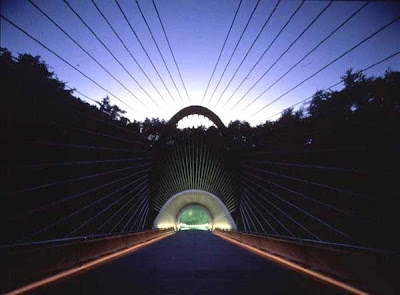
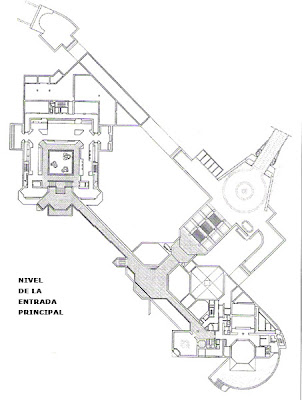
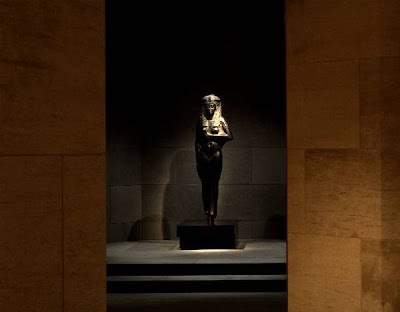
We offer personal loans up to $ 100,000, you are looking for a business loan and have been denied by a bank, we can help with loans of $ 5,000 to a maximum of $ 100,000 * that can help you get your business Rebuild and get you back Can bring you on a path to a better financial future.
ReplyDeleteOn time, you can apply in just a few minutes and get your money the same day.
Do not delay! E-mail via {samsulalamcashfirm@gmail.com} or visit us at one of our sites to see how we can help.
Thank you for contacting us,
Best regards
Mr.Samsul Alam
Samsulalamcashfirm
Samsulalamcashfirm@gmail.com
Indian Matka
ReplyDeleteprabhat satta matka
ReplyDeletematka 420
220 patti
prabhat satta matka
final ank
220 patti
satta matka